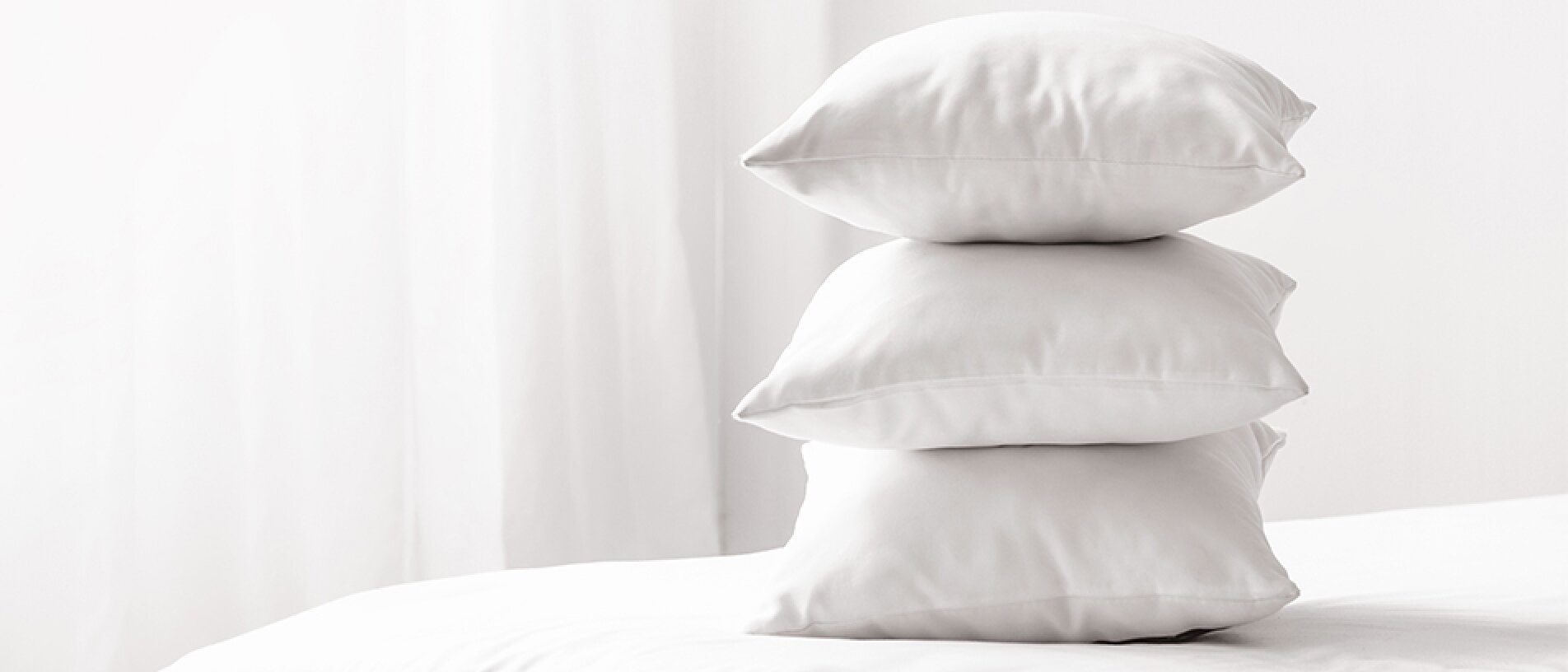You're on the list
By signing up, you agree to receive email marketing.

The perfect pillow varies between sleepers, and today's brands offer a potentially overwhelming number of options.
Here's how to choose the right one based on your specific sleep requirements and the types of bed pillows available.
Pillow materials range from natural fills to synthetic options. Choose yours with an eye for comfort, support, and durability.
Memory foam (viscoelastic polyurethane) pillows conform to the shape of your head and neck, providing support and comfort. They also absorb impact well and distribute weight evenly.
Pros: Excellent support
Cons: Can retain heat
Down pillows are made from the soft undercoating of birds, typically geese or ducks. This luxurious material, with its light and fluffy texture, has been used for centuries.
Feather pillows are a cost-effective down alternative stuffed with bird feathers.
Pros: Soft, lightweight, and very comfortable
Cons: Requires regular fluffing, can flatten over time, may poke through the fabric
Latex pillows are crafted from natural or synthetic latex, providing a supportive and comfortable sleep surface. Their unique composition makes them a solid choice for those seeking durable options.
Pros: Firm and supportive, and durable
Cons: Can be heavy and pricier
Polyester pillows are filled with synthetic fibers, making them a popular choice for cost-effective bedding.
Pros: Inexpensive and easy to care for
Cons: Less durable, can flatten quickly
Loft refers to a pillow's height or thickness, which affects the alignment of your head, neck, and spine. Firmness — how soft or hard a pillow feels — depends on the pillow's material and density.
Proper loft and firmness help ensure good posture during sleep. Pick something that puts your head at the right height and keeps it there.
Sleep should be restorative. An appropriately supportive pillow will help you maintain proper alignment and reduce the strain on your muscles and joints.
Your sleeping position plays a huge role in determining the best bedding for you.
Side sleepers rest predominantly on one side of their body.
Side sleepers may want to choose a firm pillow that maintains loft throughout the night and fills the gap between the neck and shoulder. Key features include a thicker profile and contoured shapes for additional support.
Back sleepers distribute their weight more evenly. A pillow that supports the natural arc of the neck might be most comfortable.
A medium-loft, medium-firmness pillow elevates the head just enough to feel supported.
Stomach sleepers lie flat on their stomachs with their heads turned to one side.
To minimize strain, stomach might prefer a low-loft, soft pillow that reduces the angle at which the neck is turned. A body pillow can also help by supporting the stomach and pelvis.
Combination sleepers switch positions throughout the night, rotating from their back to their side or stomach. They should seek a versatile pillow that adapts to their changing positions. Look for pillows with designs that create multiple zones of support or use responsive materials like shredded memory foam.
Your pillow's size and style should contribute to a functional, attractive, and restful sleep environment. You want something that fits your bed and is easy to clean.
It's important to clean bedding and keep pillows in good condition. Some pillows are machine washable, while others require special care. Easy maintenance can extend the life of your pillow and ensure it remains hygienic.
A perfectly made bed and quality bedding contribute to a good night's sleep. The most common pillow dimensions are:
Standard (20" x 26"): Best for twin and full beds and fit well in standard pillowcases
Queen (20" x 30"): Fit queen beds and offer a little more length for added comfort
King (20" x 36"): Sized for king beds with ample space for those who move in their sleep
Body (varies, typically 20" x 54"): Supports the body during sleep, popular with side sleepers, stomach sleepers, and pregnant women
Choosing the right size pillow for your bedroom furniture gives you a cohesive look and comfortable fit.
Pick a pillow that suits your sleeping style, bedroom, and special needs to get the restful night's sleep you deserve. Then, wake up refreshed and ready to take on the day.
Happy shopping and sweet dreams!
You're on the list
By signing up, you agree to receive email marketing.